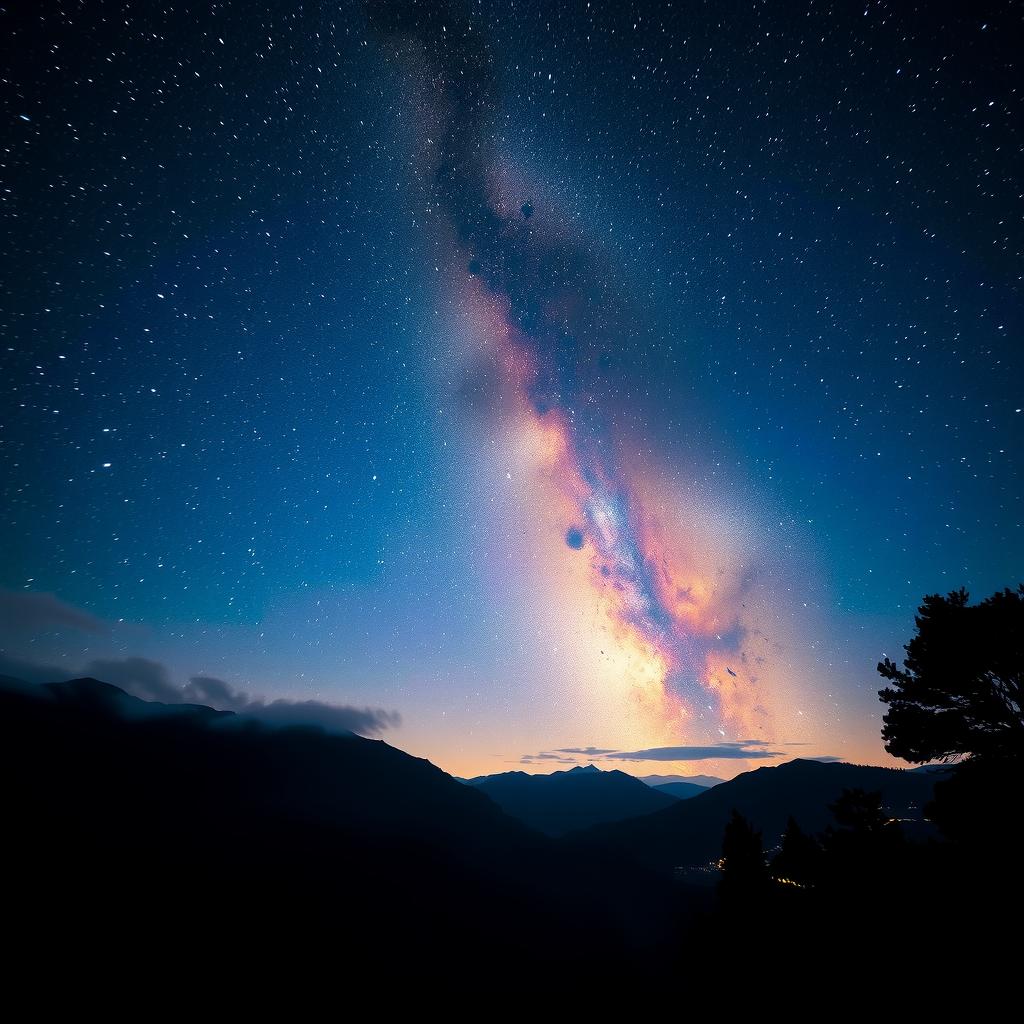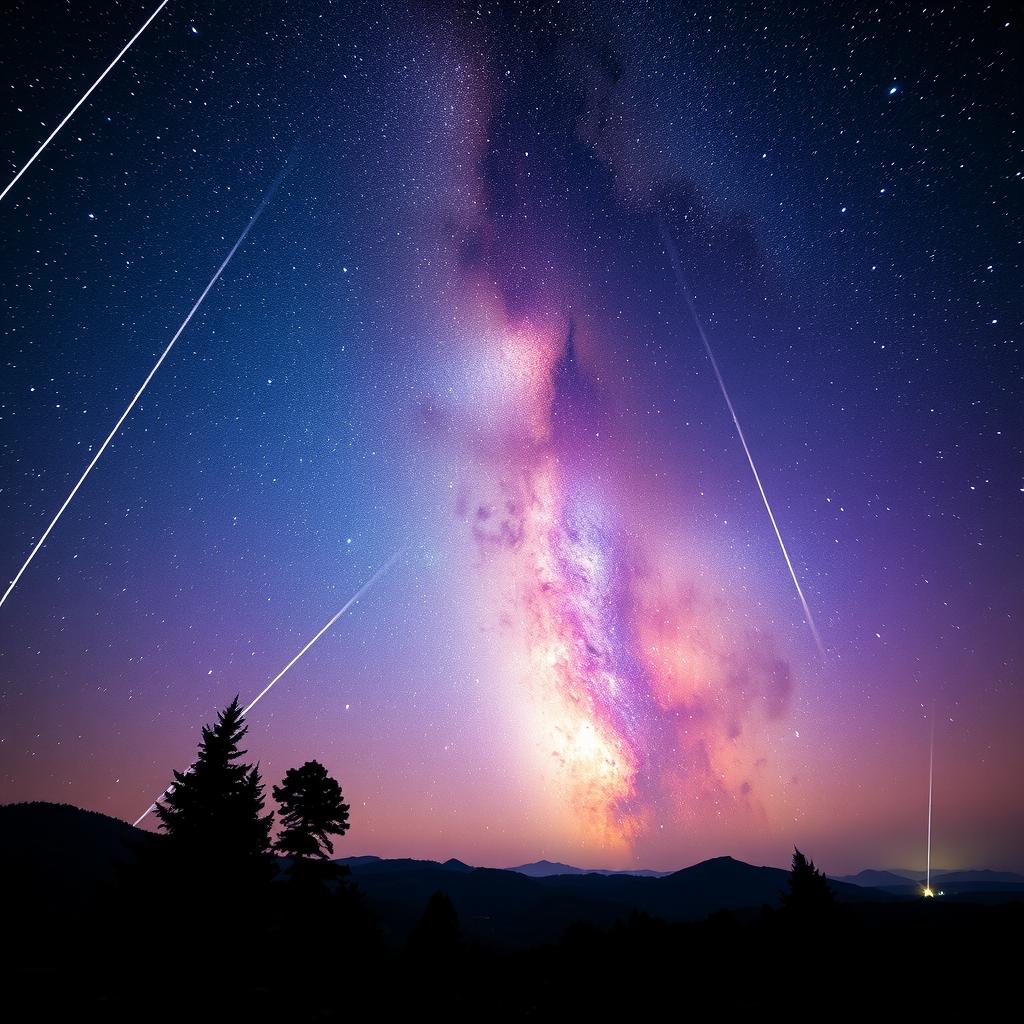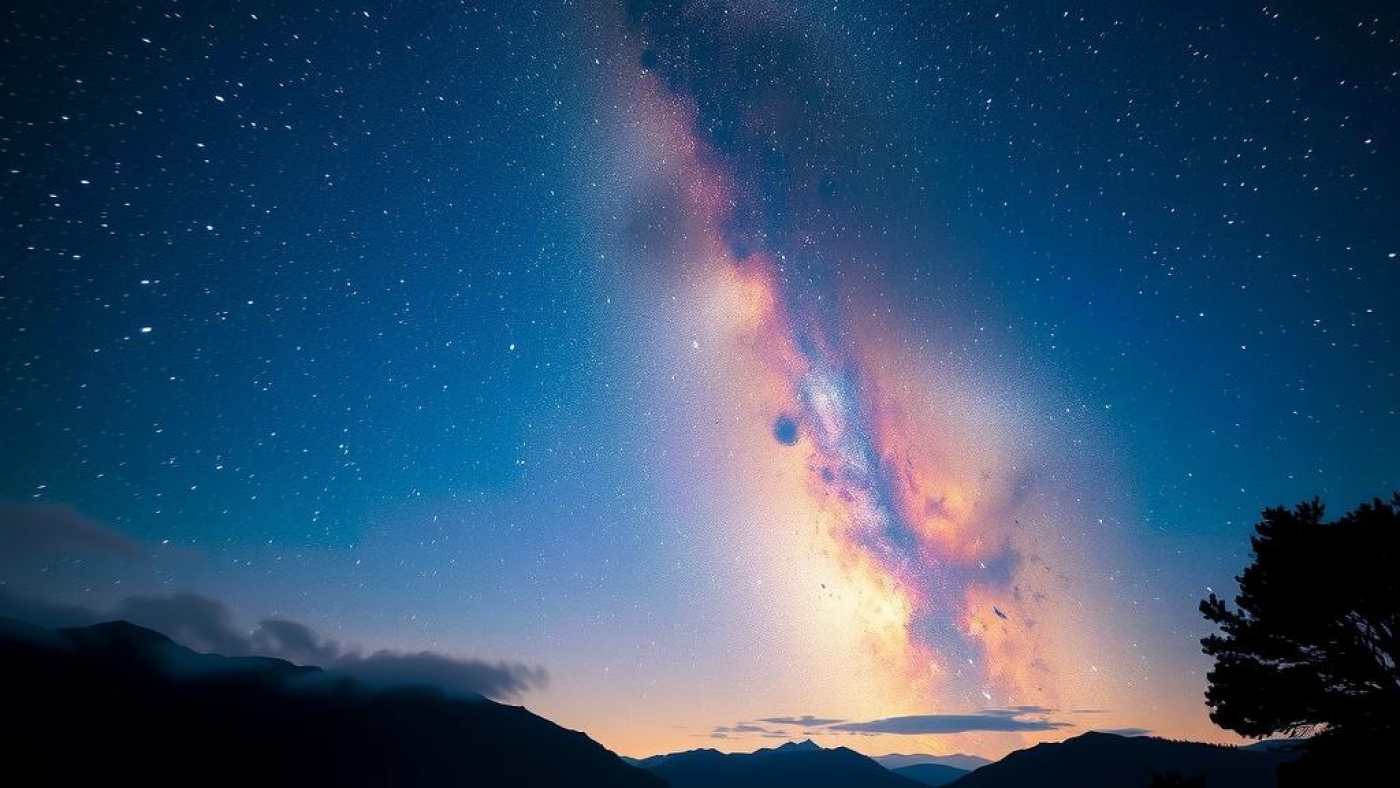In recent years, Dark Sky Tourism has emerged as a captivating trend that invites travelers to explore the mesmerizing beauty of the night sky while emphasizing the need for responsible stargazing practices. As urban areas continue to expand and light pollution becomes increasingly pervasive, many individuals are seeking refuge in remote locations where they can reconnect with celestial wonders. The allure of witnessing a blanket of stars twinkling overhead is not only about aesthetic enjoyment; it also carries profound implications for environmental conservation and cultural appreciation. Dark sky reserves and sanctuaries have been established around the globe, serving as dedicated spaces where people can immerse themselves in untainted nightscapes while supporting local economies through eco-friendly tourism initiatives.
Engaging in Dark Sky Tourism encourages participants to adopt responsible stargazing habits that prioritize both personal experience and ecological stewardship. This involves understanding astrophotography best practices, which help enthusiasts capture breathtaking images without disturbing wildlife or ecosystems. Implementing these techniques fosters an appreciation for the intricacies of astrophotography while maintaining respect for nature’s delicate balance.
The environmental importance of preserving dark skies cannot be overstated; they serve as crucial habitats for countless species and play a vital role in maintaining ecological integrity. By promoting Dark Sky Tourism, communities recognize their responsibility toward protecting these natural treasures from encroaching artificial lights that threaten nocturnal environments. Additionally, this movement highlights the cultural significance of night skies across various civilizations—stories woven into constellations have guided generations, reflecting humanity’s enduring connection to the cosmos.
Globally recognized stargazing destinations offer adventurous souls opportunities to witness unrivaled celestial displays, enhancing their travel experiences while contributing positively to conservation efforts within those regions. As visitors flock to sites designated as dark sky reserves or sanctuaries, they support local economies by generating income through sustainable tourism practices centered around astronomy-related activities.
Through thoughtful engagement with Dark Sky Tourism, individuals not only satisfy their curiosity about astronomical phenomena but also become stewards of our planet’s precious resources—a dual commitment that benefits both travelers and future generations alike. Embracing this initiative lays down pathways toward meaningful connections between humans and nature under starry skies filled with wonderment waiting just beyond city limits.

Key Points:
-
Title of the key point: The Rise of Dark Sky Tourism
The concept of Dark Sky Tourism has gained remarkable traction in recent years, drawing enthusiasts eager to experience the beauty and wonder of nighttime natural phenomena. As technology advances and urbanization continues to encroach upon pristine environments, individuals are increasingly seeking refuge in remote locations that offer breathtaking views of celestial bodies. This growing popularity is not only a testament to humanity’s enduring fascination with the universe but also highlights an urgent need for responsible stargazing practices that protect these precious dark skies. -
Title of the key point: Environmental and Cultural Significance
Preserving dark skies holds profound environmental importance as it minimizes light pollution, which adversely affects ecosystems and wildlife behavior. Additionally, there is a cultural significance tied to night skies; many communities around the world have rich traditions and stories that revolve around celestial events. Engaging with Dark Sky Tourism allows travelers to appreciate these narratives while fostering respect for indigenous knowledge about constellations and their meanings. By valuing both environmental protection and cultural heritage through stargazing experiences, individuals contribute positively towards conserving our shared planet. -
Title of the key point: Best Practices for Responsible Stargazing
Adopting astrophotography best practices is essential within Dark Sky Tourism as it encourages visitors to engage responsibly with their surroundings. Participants should prioritize using red-filtered flashlights or headlamps when navigating dark areas to minimize disturbances caused by artificial lighting. Furthermore, ensuring minimal impact on local wildlife habitats during excursions will enhance both personal enjoyment and conservation efforts in these areas. By adhering strictly to guidelines aimed at preserving dark skies while enjoying global stargazing destinations, tourists can support sustainable tourism initiatives that benefit local economies significantly.

Embarking on a Journey into the Cosmos
Unveiling the Wonders of Nighttime Natural Beauty
The allure of dark sky tourism lies in its unique ability to connect individuals with the cosmos while offering an immersive experience that is both enchanting and educational. As urbanization continues to encroach upon natural habitats, the phenomena of light pollution have obscured our view of celestial wonders, making it increasingly important for enthusiasts and casual observers alike to seek out places where stars still shine brightly. Dark skies serve not only as a haven for astronomy enthusiasts but also play an essential role in preserving ecological integrity. The environmental importance of dark skies cannot be overstated; they provide critical habitats for nocturnal wildlife and are integral to various ecosystems. Moreover, areas designated as dark sky reserves or dark sky sanctuaries often become focal points for local economies through sustainable tourism practices that emphasize responsible stargazing.
The Importance of Preservation
Safeguarding Our Celestial Heritage
While engaging in dark sky tourism, it is imperative that visitors understand their responsibility toward preserving these pristine environments. Practicing responsible stargazing ensures that future generations can appreciate nighttime natural wonders just as current ones do. This involves adhering to astrophotography best practices, such as minimizing light exposure from cameras or using specialized filters designed not to disrupt the delicate ambiance found within these protected areas. By keeping artificial lights at bay, tourists contribute significantly towards maintaining the clarity and quality of night skies—a key factor in attracting both amateur astronomers and professional researchers alike. Furthermore, education about the cultural significance attached to night skies enriches visitors’ experiences; many cultures around the world have woven stories into constellations, creating a tapestry rich with history.
Global Destinations Worth Exploring
A World Awaits Beneath Starry Canopies
Globally recognized destinations dedicated to dark sky tourism offer unparalleled opportunities for wonderment beneath starry canopies filled with awe-inspiring sights like meteor showers or lunar eclipses. Locations such as Big Bend National Park in Texas or Jasper National Park in Canada exemplify how communities leverage their dark skies while fostering conservation efforts aimed at protecting these valuable resources from further degradation due to brightening urban landscapes nearby. These initiatives inspire environmental stewardship among locals—integrating economic growth tied directly back into nature’s bounty rather than detracting from it through overdevelopment or industrialization projects rending landscapes obsolete before their time has come full circle again under star-studded nights overhead! Thus emerges an intricate balance between appreciating beauty above us while nurturing land below—an endeavor well worth undertaking by anyone seeking true connection amidst eternal darkness illuminated only by shimmering secrets scattered across vast expanses above them all!

The Allure of the Night Sky
Rediscovering Celestial Beauty Amidst Urban Lights
In an era marked by increasing light pollution, Dark Sky Tourism has emerged as a compelling movement that beckons individuals to rediscover the beauty of celestial bodies. As urban environments expand and artificial lighting proliferates, many are left yearning for the pristine night skies that were once commonplace. This burgeoning interest in dark sky tourism highlights not only a desire for visual splendor but also underscores the environmental importance of dark skies. Dark sky reserves and sanctuaries have become critical focal points for responsible stargazing efforts, offering designated areas where natural darkness is preserved against encroaching urban luminescence. Visitors flock to these serene locales to experience breathtaking views of constellations, meteor showers, and even deep-sky objects like nebulae and galaxies.
The cultural significance of night skies cannot be overstated; they have served as inspiration for countless folklore stories, scientific discoveries, and artistic expressions throughout human history. By engaging with Dark Sky Tourism, travelers immerse themselves in rich traditions while cultivating an appreciation for astronomical phenomena that connect diverse cultures across time zones and geographies. These experiences foster a collective responsibility toward preserving dark skies—an essential component not just for aesthetic enjoyment but also vital for ecological balance. Local economies thrive on this wave of astrotourism as businesses adapt their offerings to cater specifically to stargazers—ranging from guided tours led by experienced astronomers to workshops on astrophotography best practices.
Furthermore, global stargazing destinations are increasingly recognized within conservation efforts aimed at protecting nocturnal ecosystems adversely affected by light pollution. Such initiatives demonstrate how communities can harmonize economic growth with environmental stewardship through strategic planning focused on sustainability alongside tourism development related to Dark Sky Tourism. Engaging visitors in discussions about the impact of their presence fosters awareness around energy consumption patterns while encouraging them to adopt more sustainable habits back home.
As enthusiasts embark on journeys into these luminous wonders beyond city limits, they contribute positively towards maintaining dark environments crucial both scientifically and culturally—a win-win scenario bolstered by thoughtful practices surrounding responsible stargazing methods that prioritize minimal disturbance upon arrival at viewing sites.
Responsible Stargazing Practices
Essential Guidelines for Enjoying the Night Sky
Engaging in stargazing and astrophotography offers enthusiasts a unique opportunity to connect with the universe while enjoying breathtaking views of celestial bodies. However, it is crucial to adopt responsible stargazing practices that prioritize environmental sustainability. As interest in dark sky tourism grows, individuals must recognize their role in preserving these precious night skies. The first step towards responsible stargazing involves choosing locations wisely; opting for designated dark sky reserves or dark sky sanctuaries, which are areas specifically protected from light pollution, ensures an enhanced viewing experience while supporting local conservation efforts.
When visiting these sites, practicing minimal impact techniques is essential. This includes adhering strictly to pathways and avoiding damage to vegetation or wildlife habitats that exist within these natural settings. Using red-filtered lights when navigating at night can help maintain the natural darkness of the environment, allowing both visitors and local fauna to thrive without disruption. Moreover, participants should consider using equipment such as telescopes or cameras equipped with light shields that minimize stray light emissions—this practice aligns with astrophotography best practices, promoting a respectful interaction between humans and nature.
In addition to environmental considerations, one must acknowledge the cultural significance of night skies across various communities worldwide. For many indigenous peoples and cultures globally, constellations serve as vital elements of heritage and storytelling traditions. By engaging responsibly in activities like astrophotography while respecting these narratives fostered by dark skies enhances appreciation for diverse viewpoints regarding our cosmic surroundings.
Economic benefits also arise from embracing dark sky tourism. Communities surrounding dark sky destinations often see boosts in local economies through increased visitor traffic seeking authentic experiences under pristine heavens—a win-win scenario where both economic vitality and conservation coexist harmoniously. It becomes incumbent upon tourists not only to enjoy but also protect what they admire; this duality enriches their experience exponentially.
Ultimately, understanding the environmental importance of dark skies extends beyond personal enjoyment—it embodies a collective responsibility toward future generations who will gaze upward just as current enthusiasts do today. With conscious choices made by individuals passionate about astronomy or photography alike—becoming stewards rather than mere spectators—the preservation of our universe’s wonders remains firmly rooted within accessible reach for all those eager travelers exploring global stargazing destinations around them.
The increasing popularity of Dark Sky Tourism reflects a growing awareness of the beauty and significance of nighttime natural wonders. This trend encourages travelers to explore pristine night skies, offering an opportunity to experience celestial phenomena like meteor showers, the Milky Way, and more. As urban areas continue to expand and light pollution rises, dark sky reserves and sanctuaries around the world are becoming vital for preserving dark skies. These protected areas not only allow for exceptional stargazing experiences but also highlight the environmental importance of dark skies in maintaining ecosystems that depend on natural light cycles.
Preserving dark skies carries significant cultural importance as well. Many communities have deep-rooted traditions tied to celestial bodies, from navigation methods used by ancient civilizations to modern spiritual practices that honor the night sky’s majesty. Dark Sky Tourism fosters respect for these cultural narratives while encouraging responsible stargazing practices among enthusiasts. By prioritizing minimal impact techniques when observing or photographing celestial events—such as using red-filtered lights or limiting noise—a greater appreciation for both nature and culture emerges within this tourism sector.
In addition to its ecological and cultural benefits, Dark Sky Tourism plays a crucial role in bolstering local economies through sustainable tourism initiatives. Regions with dark sky reserves often see increased visitor numbers drawn by their unique offerings related to stargazing experiences and astrophotography best practices. This influx can lead directly to job creation in sectors such as hospitality, guiding services, and conservation efforts aimed at protecting these invaluable nocturnal environments while fostering community engagement with their surroundings.
Common Inquiries:
Q: What is Dark Sky Tourism?
A: Dark Sky Tourism refers to travel activities centered on experiencing unpolluted night skies through stargazing opportunities at designated locations known as dark sky reserves or sanctuaries.
Q: How can one practice responsible stargazing?
A: Responsible stargazing involves following best practices such as minimizing light pollution by using appropriate lighting equipment (like red filters), respecting wildlife habitats during visits, staying on marked paths, and keeping noise levels low.
Q: Why is it important to preserve dark skies?
A: Preserving dark skies is essential due to their environmental significance—supporting diverse ecosystems—and their cultural relevance throughout history where many societies have developed connections with stars that shape identity and tradition.
